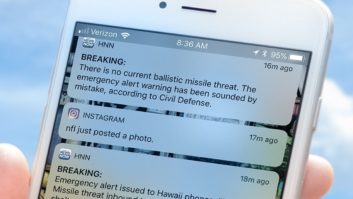The Federal Communications Commission is reminding U.S. broadcasters and other EAS participants of their obligations to comply with the Emergency Alert System rules, including ensuring that alerts are accessible to persons with disabilities.
Here is a link to the full advisory.
“In reporting on the most recent national level test of the EAS, the FCC’s Public Safety and Homeland Security Bureau noted improvements in key areas, but identified several issues that impair dissemination of EAS messages,” the Enforcement Bureau stated in a five-page published advisory.
“The 2019 Nationwide EAS Test Report noted, for instance, that EAS Participants must ensure that messages comply with the FCC’s requirements designed to make the message accessible to individuals with hearing and vision disabilities.”
The document reminded stations and other to upgrade their EAS software and firmware to the most recent versions; change default passwords; secure EAS equipment behind good firewalls; and synch EAS equipment clocks to the National Institute of Standards and Technology if the gear doesn’t automatically synchronize via the internet.
EAS participants also need to understand their role in the broadcast-based distribution architecture of the EAS, for instance what it means if you have a “participating national” designation. They need to know how to monitor multiple sources to ensure redundancy and reduce the possibility of message receipt failures; how to follow up with monitored sources when an EAS message is not received to determine the cause; and how to submit national test results.




